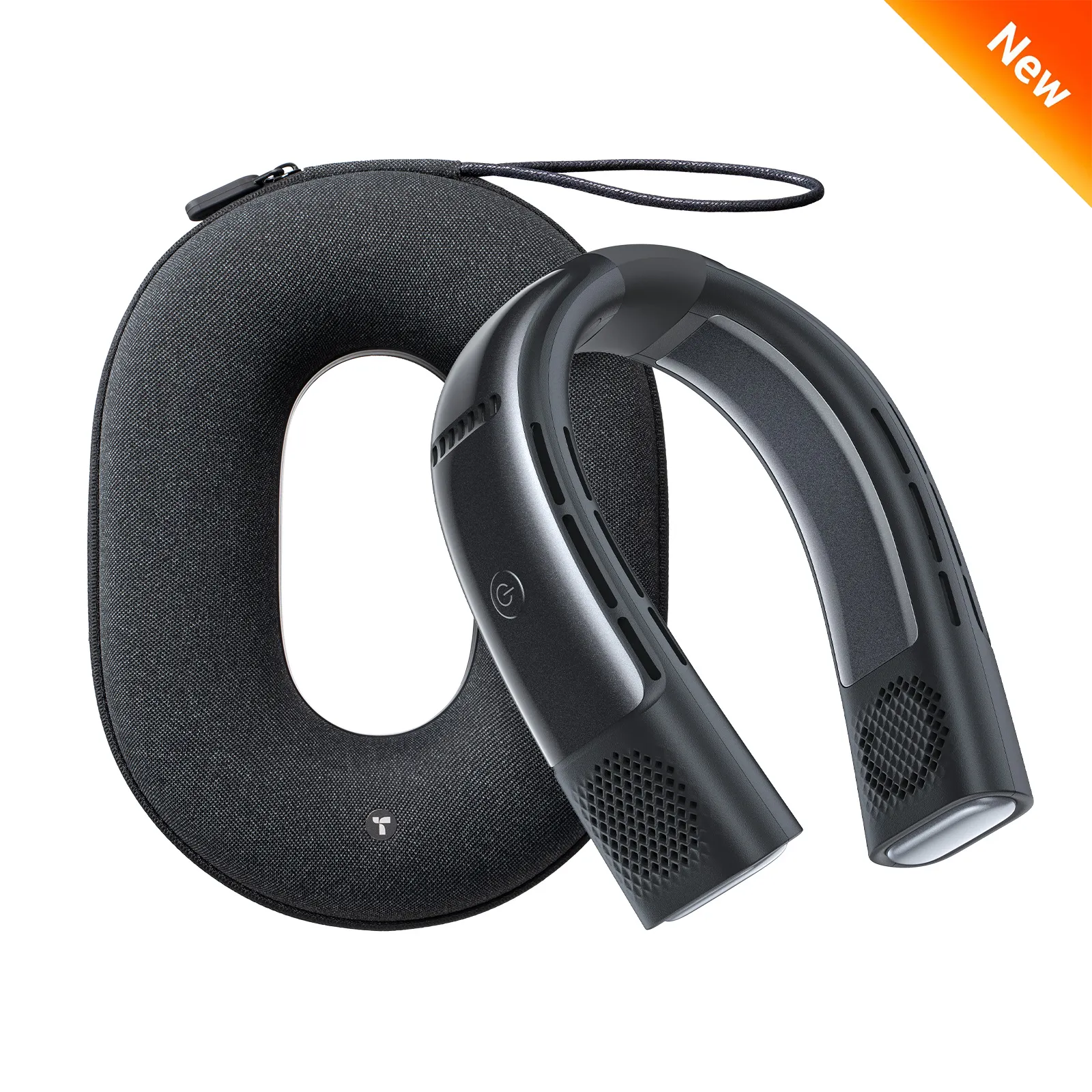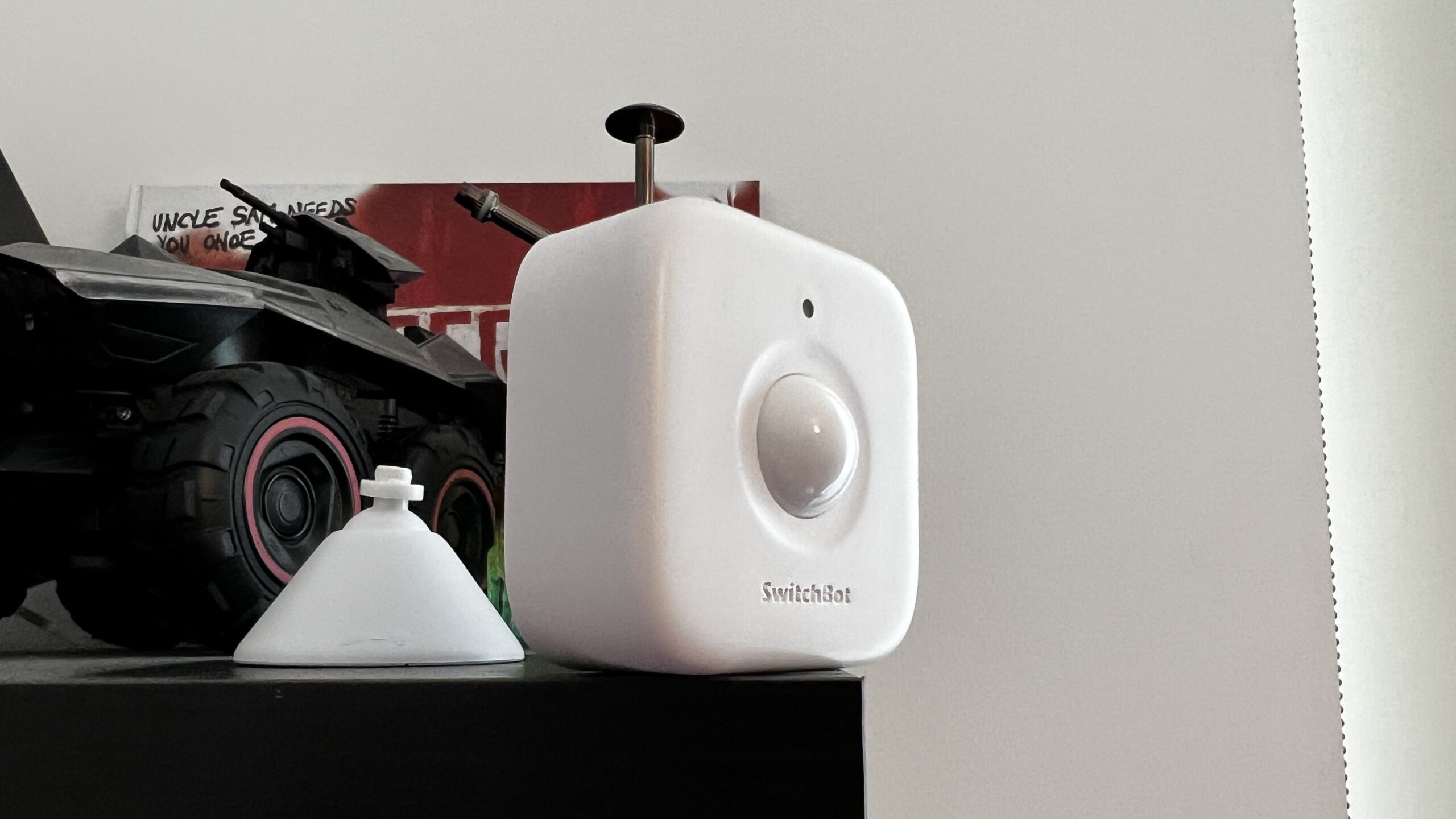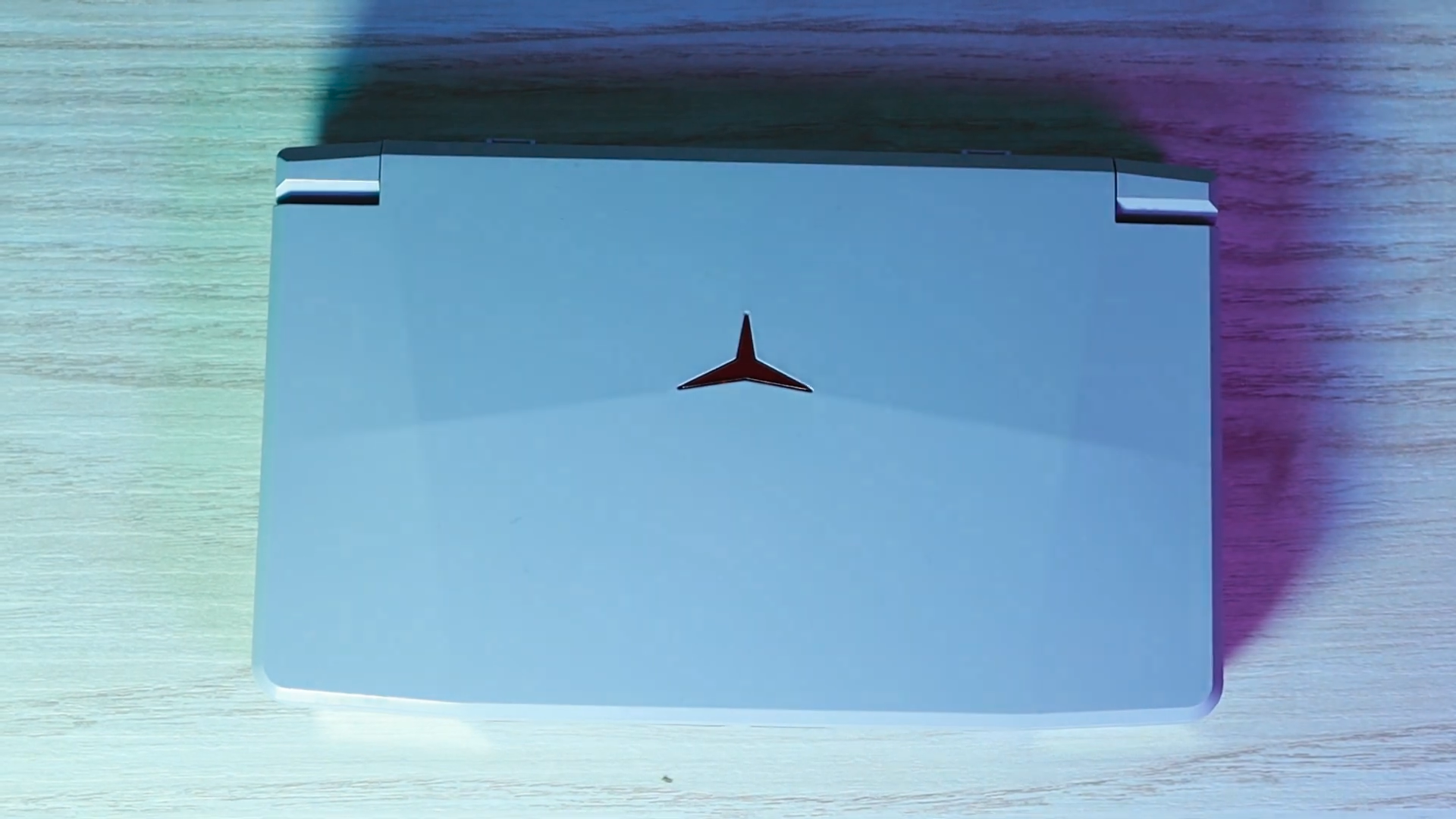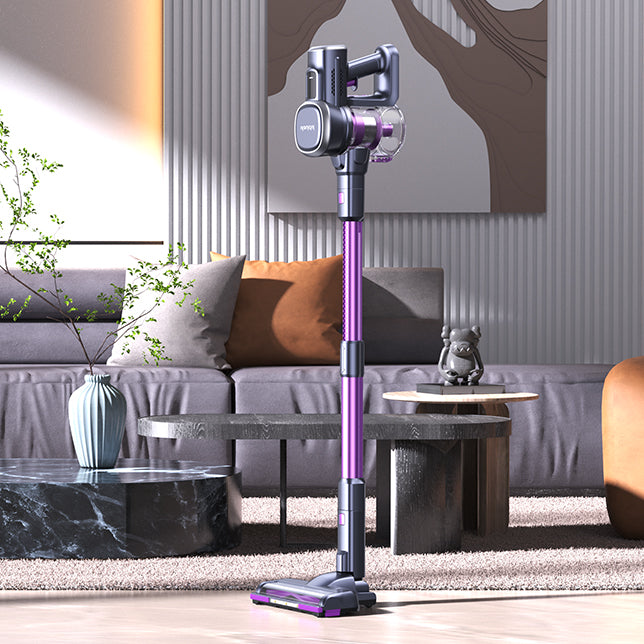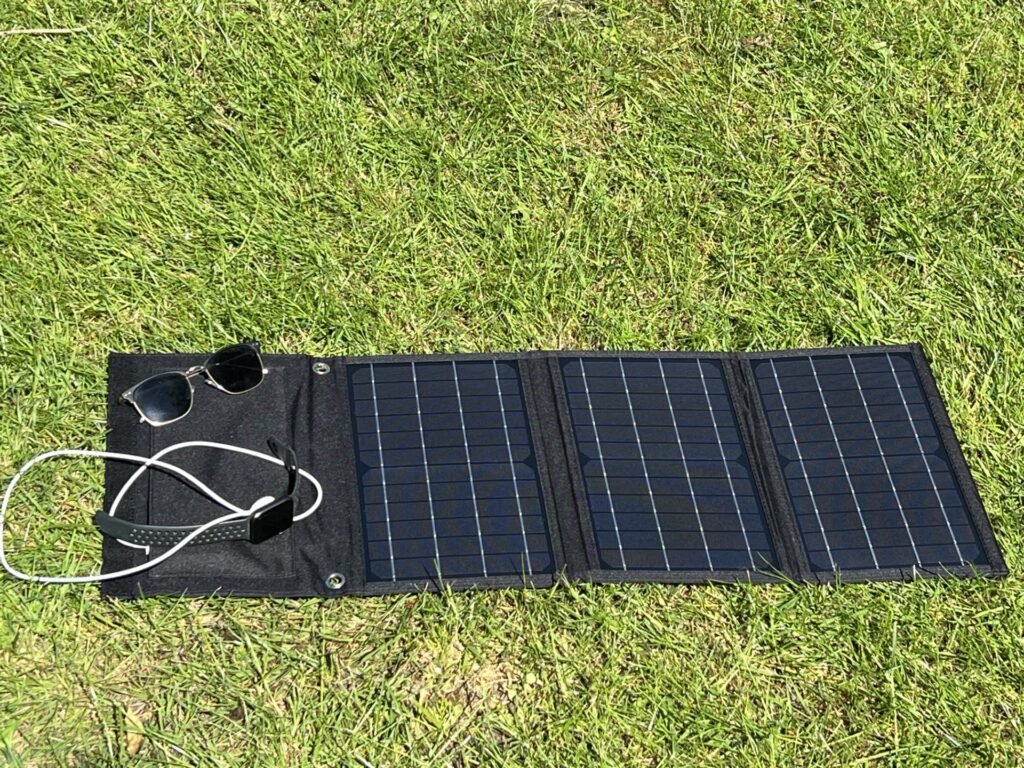
Sun’s out, panels out
| Pros | Cons |
| With good Sunlight, the Tx-207 charges devices relatively quickly. Lightweight and compact when folded. Free energy from the Sun, what’s not to like! | Relies on Sunlight, no battery option Can be difficult to find a suitable angle without a stand. Lack of USB-C limits charge speed. |
Technaxx is a German manufacturer that has specialised in lifestyle, multimedia, and security products since 2002. Recently, they’ve moved into the solar industry and have designed several solar powered products for the consumer market. These range all the way from panel chargers to large portable charging stations. Recently I’ve had the opportunity recently to test their Tx-207 21w portable solar charging case, a product that is designed to charge up to two mobile devices when outdoors. This is a product is likely aimed at campers, hikers and those who spend time outdoors, but want a way to keep devices charged using an alternative method to battery and mains powered chargers.
Design and specs
In terms of the design and the technology of the Tx-207’s panels, we have monocrystalline panels that Technaxx claims convert up to 19% of solar energy into free energy with suitable sunlight. This is a preferred choice over polycrystalline panels, that typically are less efficient, converting around 13-16% of solar energy. There are solar panels chargers that do claim up to 25% energy conversion efficiency, but I would urge caution with such claims at the lower price point especially. The case houses two USB-A ports with a maximum output of 6 volts and 3 amps, and so there is the ability to charge two devices simultaneously. However, that does mean that any power output by the charging case will be split between both the devices being charged should you wish to charge devices at the same time.
The Tx-207 adopts a fold out design, that reveals three solar panels along with a fourth section that houses the charging ports. It’s good to see that the ports are enclosed in a small fabric pocket, which should keep them from being damaged when in use. I would point out though that it is not sealed shut when in use, so I’d be mindful of rain and dirt getting into the ports if care isn’t taken. The fact that the product folds up when not in use is great, as it greatly reduces the footprint of the case when being stowed away in a backpack for example- and at 750g, it’s also light enough that it won’t be uncomfortable to carry with you. It folds up into a clutch bag style look and seems to be made of a durable fabric, that hopefully will withstand some wear and tear given it will be primarily used outdoors.
When folded out, we also have attachment points at each corner of the case, and so you can strap this to a backpack to charge devices while hiking or walking for example. One thing to note- it doesn’t include any straps in the box, so you will need to acquire your own if you’re thinking of attaching this to anything. I think it would have been great to see some straps included in the box, but it’s a minor inconvenience that doesn’t detract from the overall well thought out design that Technaxx have gone for here.
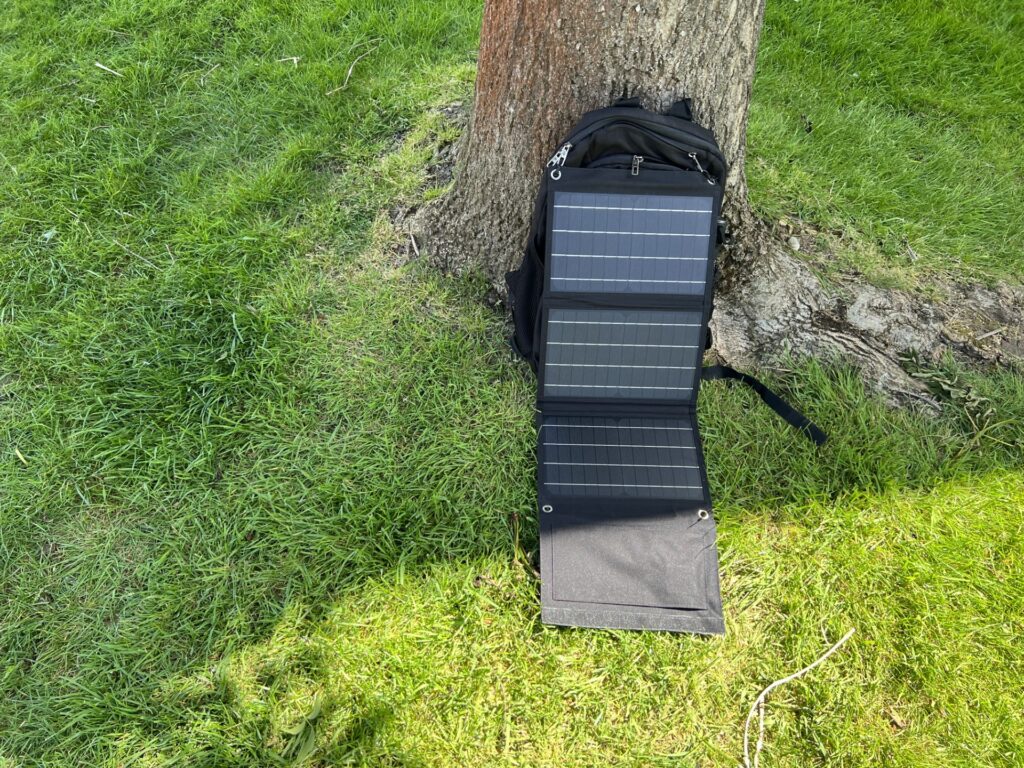
Testing
During my time testing the charging case, I had some mixed results in terms of how it performed. The speed (and therefore the wattage) that you can expect when charging will largely depend on how much direct sunlight the panels are receiving and that you find the optimal angle for the panels to face relative to where the Sun is. As we all know, the British weather is unpredictable at best, especially during May time, and so testing in a variety of conditions was necessary to provide a more realistic outlook of what you can expect. To do this, I decided to test at times when the sky was cloudy, as well as some select moments during testing when there was bright Sun also. I was able to get the panels to a somewhat optimum angle with a bit of trial and error. The case does not stand on its own and so it was tricky at times to prop it up appropriately. For that reason, I think using a stand would be preferred if you are planning to use it stationary to keep it in the desired position.
When being tested, I used a USB-A/C tester to try and get some data on the wattage being provided when one USB was in use as well as the second USB also charging something at the same time. At 12:05pm I unfolded the panels and propped them up into a position where they would be best able to soak up the May Sun, which by this point had just a few clouds around for company. The temperature was 15 degrees Celsius outside, and when the case was plugged into my portable power bank the tester was showing 10.3 watts (w) being transmitted. This fluctuated between 10-11w for the next 30 minutes which was decent enough to give my power bank the juice it needed to keep charging.
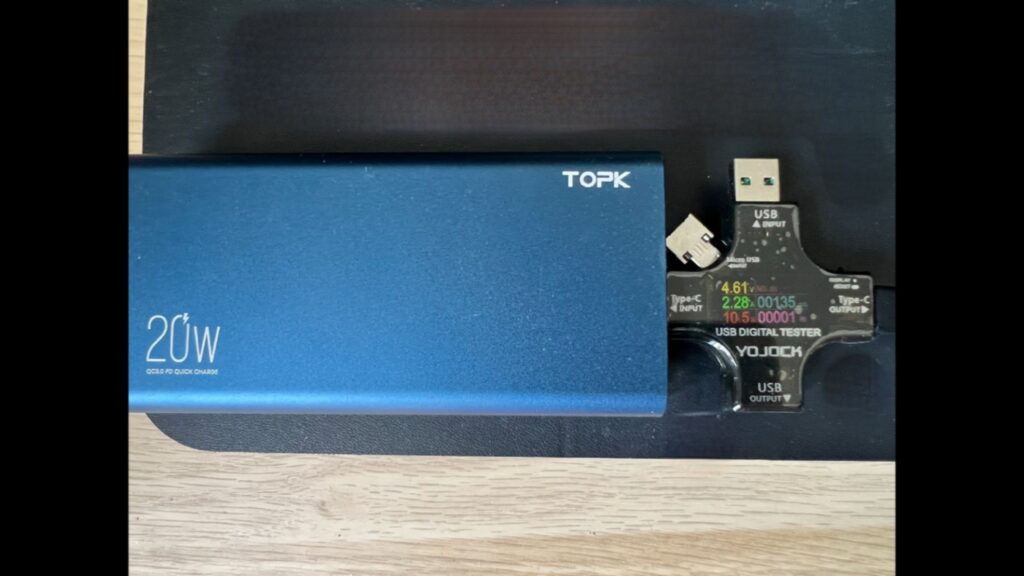
I then decided to plug my phone into the other available USB-A port, and this dropped the wattage for each device down to around 5w. This was still enough to top up my phone’s battery by 10% every 15-20 minutes on average, considerably slower than normal but respectable given the device is running on the Sun’s power alone! One caveat, though- as the Sun moved out of the optimum angle range required, when plugging in one device it dropped down to as low as 3-3.5w of power, so it’s important that you keep the Tx-207 at the suitable position it needs to maximise wattage.
Overall thoughts
In more ideal weather conditions, I’d have expected to see higher wattage than the 10-11w we saw on the days where there was moderate Sunshine- and certainly closer to the 19w the company claims the device can output to devices. But, as always, the beauty of British weather and its unpredictability will always be a factor in the performance of the Tx-207. However, with that considered the device does still provide a suitable charge to most mobile devices and costs absolutely nothing to run, a big plus in a world where energy costs are rising constantly. I think the inclusion of USB-C would have been nice, as we would likely have seen some higher power delivery to devices. Unfortunately, the limited capabilities of USB-A will always mean lower charge speeds, but for the reasonable price of this product, this is to be somewhat expected. To charge at higher wattages, it’s likely that we would also require very good direct sunlight to achieve this level of power.
Conclusion
Overall, I think this device would really suit campers, hikers, and outdoor enthusiasts. It’s clear that you will need to accept that it does take longer than at home for any devices to charge- but that’s not a fault of the product, and more of a limitation of solar technology itself. Technaxx have designed a product that could really be a life saver if you ever find yourself without a mains power source providing you at least have some Sunlight. Of course, it is a case of ‘your mileage may vary’ given the weather dependency that this type of product relies on. However, in the summer I can see how the Tx-207 would be a great addition to those who spent extended time outdoors- and I am pleased to be able to recommend this product on that basis.
All product links directing off-site will be affiliate links when possible and where applicable, and may result in commission earned on qualifying purchases. Find out more about our promise to you.


